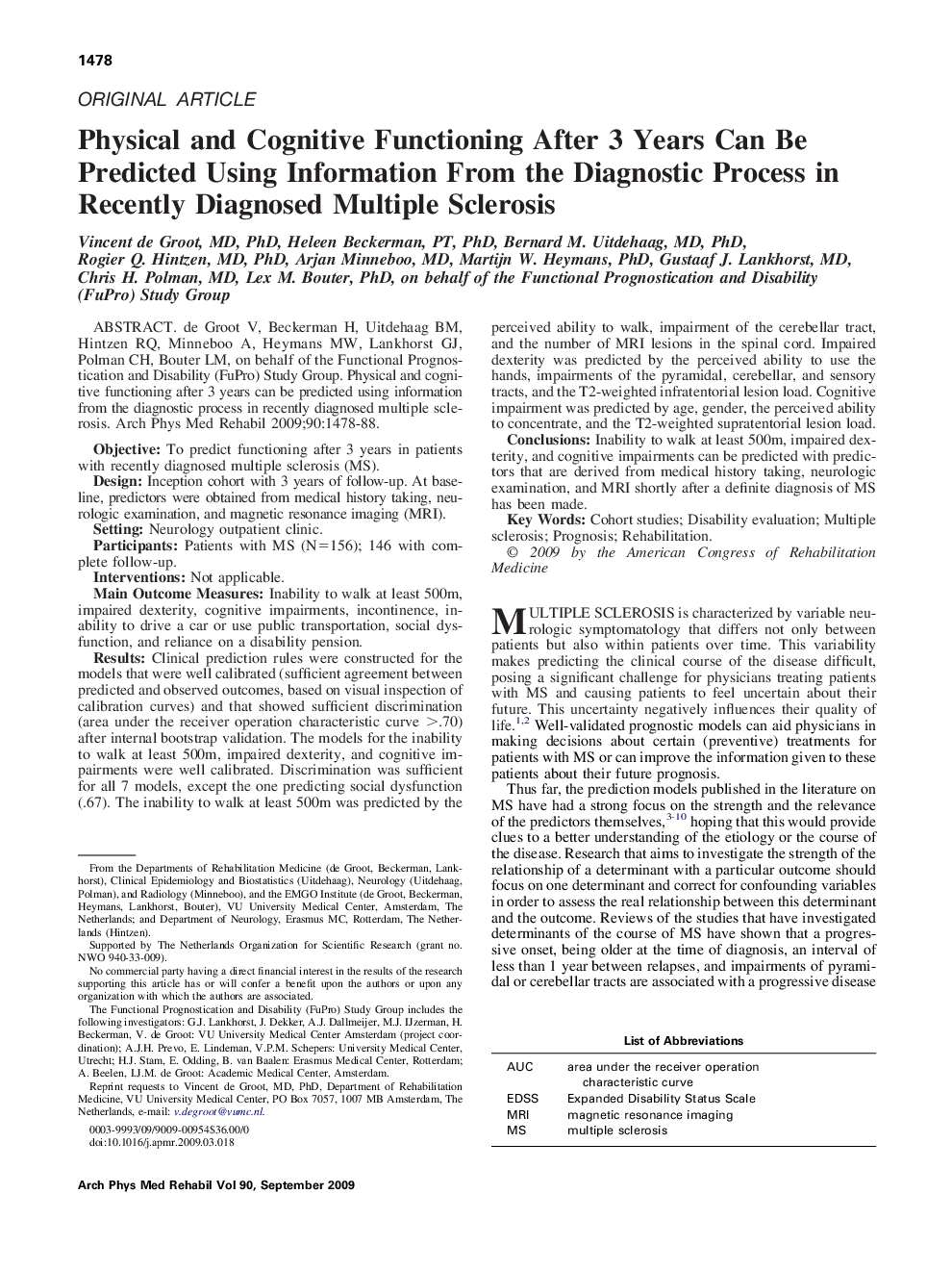| Article ID | Journal | Published Year | Pages | File Type |
|---|---|---|---|---|
| 3451815 | Archives of Physical Medicine and Rehabilitation | 2009 | 11 Pages |
de Groot V, Beckerman H, Uitdehaag BM, Hintzen RQ, Minneboo A, Heymans MW, Lankhorst GJ, Polman CH, Bouter LM, on behalf of the Functional Prognostication and Disability (FuPro) Study Group. Physical and cognitive functioning after 3 years can be predicted using information from the diagnostic process in recently diagnosed multiple sclerosis.ObjectiveTo predict functioning after 3 years in patients with recently diagnosed multiple sclerosis (MS).DesignInception cohort with 3 years of follow-up. At baseline, predictors were obtained from medical history taking, neurologic examination, and magnetic resonance imaging (MRI).SettingNeurology outpatient clinic.ParticipantsPatients with MS (N=156); 146 with complete follow-up.InterventionsNot applicable.Main Outcome MeasuresInability to walk at least 500m, impaired dexterity, cognitive impairments, incontinence, inability to drive a car or use public transportation, social dysfunction, and reliance on a disability pension.ResultsClinical prediction rules were constructed for the models that were well calibrated (sufficient agreement between predicted and observed outcomes, based on visual inspection of calibration curves) and that showed sufficient discrimination (area under the receiver operation characteristic curve >.70) after internal bootstrap validation. The models for the inability to walk at least 500m, impaired dexterity, and cognitive impairments were well calibrated. Discrimination was sufficient for all 7 models, except the one predicting social dysfunction (.67). The inability to walk at least 500m was predicted by the perceived ability to walk, impairment of the cerebellar tract, and the number of MRI lesions in the spinal cord. Impaired dexterity was predicted by the perceived ability to use the hands, impairments of the pyramidal, cerebellar, and sensory tracts, and the T2-weighted infratentorial lesion load. Cognitive impairment was predicted by age, gender, the perceived ability to concentrate, and the T2-weighted supratentorial lesion load.ConclusionsInability to walk at least 500m, impaired dexterity, and cognitive impairments can be predicted with predictors that are derived from medical history taking, neurologic examination, and MRI shortly after a definite diagnosis of MS has been made.
